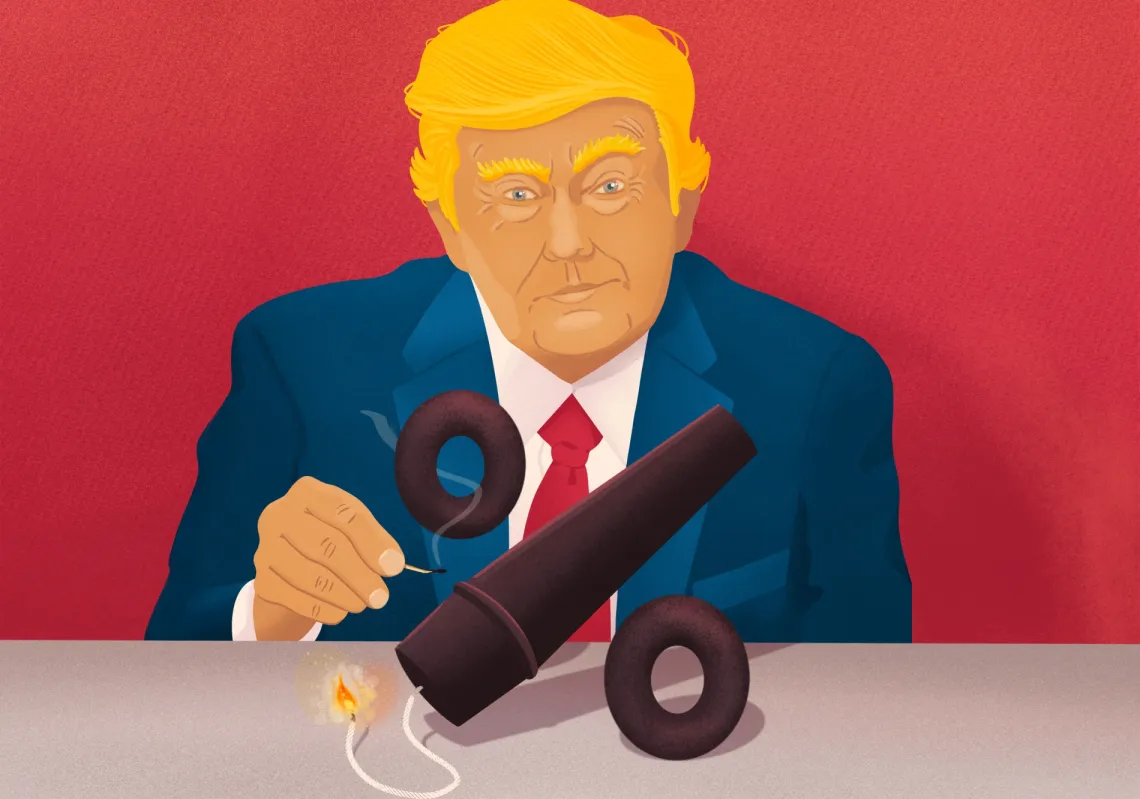Tariffs are the talk of the town, with US President Donald Trump having begun his second term by increasing them on both allies and economic rivals before temporarily pausing many of the higher rates until July to allow time for trade deals.
A tax or duty to be paid on a particular type of import or export, tariffs are far from new. They date back to the 15th century, to the discoveries of Christopher Columbus and the expansion of foreign trade by European states, whose economies relied on high tariff barriers to curb imports, which were associated with outward flows of gold and silver.
In the late 18th century, the Industrial Revolution in Europe brought about a significant shift in the function of tariffs. Industrial nations began producing and exporting more goods, and the advent of railways and steamships facilitated their sales abroad. This led them to lower tariffs for their trade partners. In contrast, countries in the early stages of industrialisation maintained high tariffs to protect their fledgling industries.
US protectionism
The United States was among the last nations to reject David Ricardo’s theory of comparative advantage—one of the pillars of classical economic thought. Instead, it embraced protectionism, most notably through the McKinley Tariff Act of 1890, which increased tariffs to protect domestic industries. As a percentage of the customs value of US imports, tariffs rose from 20.5% to 29%.

In 1922, the Fordney-McCumber Tariff Act increased tariffs up to an average of 38%, and they rose again under the Smoot-Hawley Tariff Act of 1930, up to 59% on more than 3,200 imported goods. This was an attempt to mitigate the fallout from the Wall Street Crash of autumn 1929. European countries and Japan responded by raising their own tariffs, accelerating the global spread of the financial crisis.
The Smoot-Hawley Tariff Act faced significant opposition. More than 1,000 leading economists, including the renowned monetary theorist Irving Fisher, signed a petition urging President Herbert Hoover to veto the law, with American industrialist and car manufacturing pioneer Henry Ford calling it “sheer economic folly”.
Free trade proponents blamed tariffs for worsening the Great Depression, during which world trade collapsed from roughly $3bn a month in January 1929 to just over $1bn a month by March 1933. Others, however, argued that the primary cause of the trade contraction was the global shortage of liquidity, not protectionism. Nobel laureates Paul Krugman, Maurice Allais, and Milton Friedman agreed.
Lowering trade barriers
In 1933, delegates from 66 countries gathered in London to seek a way out of the Great Depression by lowering trade barriers and stabilising exchange rates. The conference failed because countries that had abandoned the gold standard, such as the UK and the US, refused to peg their currencies at fixed nominal values, as demanded by nations that had retained the gold standard, including France.
In 1934, the US Congress passed the Reciprocal Trade Agreements Act, granting the President the authority to reduce or increase tariffs by up to 50% from the Smoot-Hawley levels, in exchange for reciprocal concessions from other countries. The Roosevelt Administration subsequently signed trade agreements with 19 countries in Europe and the Americas, and the resulting tariff reductions boosted economic growth.














